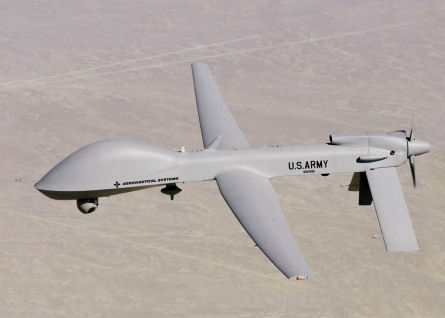Range could use common propulsion section and family interchangeable warheads
Work is under way to design a new range of munitions specifically for use by the unmanned air vehicle element of the US Army's Future Combat Systems programme, with a version of the service's General Atomics Warrior potentially to be the first to benefit.
US military UAVs have until now used inventory weapons such as the Lockheed Martin AGM-114 Hellfire and Northrop Grumman Viper Strike, but a new range of munitions could use a common propulsion section and a family of interchangeable warheads to deal with both stationary and moving targets.
Each munition is expected to be around 45cm (18in) long, weigh around 0.9kg (2lb) and to deliver smaller areas of effect than traditional missiles, possibly requiring them to be launched in salvoes, or to have a glide capability, the army says.
"We want lethality for a non-traditional enemy," US Army advanced science and technology directorate director Suzy Young told the US-European micro air vehicle competition and workshop in Toulouse, France. The service has also set out a long-term roadmap for innovative methods for target acquisition and tracking, she said, with FCS payload options including laser designators to highlight targets for armed unmanned ground vehicles.
The US Army meanwhile expects to test fire an air-launched version of Israel Aerospace Industries' gun-launched laser homing anti-tank weapon system from a Northrop MQ-5 Hunter UAV. The anti-armour missile weighs 13kg and has a maximum range of over 14km (7.5nm).
|
|---|
General Atomics' Warrior could be first to benefit from new weapons |
Source: Flight International
























